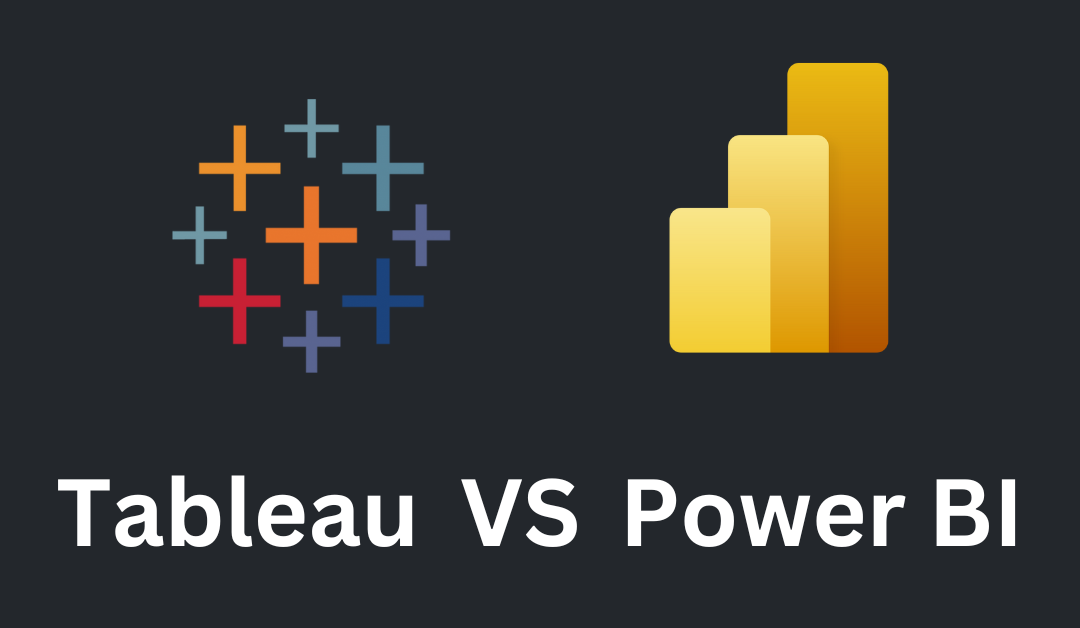In the age of data, seeing is believing. And when it comes to unraveling insights from the mountains of information we collect, data visualization tools like Tableau and Power BI are our superheroes. But with both boasting impressive features and passionate followers, choosing the right one can feel like a superpower duel in itself. Don’t worry, data wranglers, this blog is here to help you pick the perfect champion for your visualization needs.
Round 1: The Visionaries – Visualizations and Design
- Tableau: Tableau shines in sheer artistry. Its drag-and-drop interface empowers users of all skill levels to create stunning, pixel-perfect dashboards and visualizations. Think intricate maps, interactive charts, and dashboards that tell compelling stories with a single glance.
- Power BI: While Power BI offers a wide range of visuals, its aesthetic leans towards pragmatism. The interface is intuitive, particularly for Excel users, and visualizations are clear and easily digestible. Think streamlined reports and interactive dashboards tailor-made for business intelligence.
Judge’s Verdict: Tableau wins on visual flair and customization, while Power BI excels in user-friendliness and clarity. Choose Tableau if you’re a data storyteller craving visual impact, and Power BI if efficiency and ease of use are your top priorities.
Round 2: The Data Whisperers – Data Handling and Performance
- Tableau: Tableau excels at crunching large datasets, offering incredible performance even with complex analyses. Its in-memory data engine lets you explore data seamlessly, making it ideal for deep dives and data discovery.
- Power BI: Power BI handles smaller datasets with lightning speed, but can lag with larger ones. However, its integration with Microsoft Azure cloud services offers scalability and real-time data refresh, making it a strong contender for larger organizations already invested in the Microsoft ecosystem.
Judge’s Verdict: Tableau takes the gold for raw data horsepower, while Power BI shines in agility and cloud integration. Choose Tableau if you’re wrestling with massive datasets, and Power BI if cloud-based solutions and smaller, fast-paced analyses are your game.
Round 3: The Collaborators – Sharing and Security
- Tableau: Tableau offers basic sharing and collaboration features, but requires third-party tools for advanced scenarios. Its server-based licensing can be expensive for large teams.
- Power BI: Power BI boasts robust, built-in features for co-authoring, commenting, and sharing dashboards. Its integration with Microsoft Teams and SharePoint fosters seamless collaboration within organizations.
Judge’s Verdict: Power BI emerges as the collaboration champion, while Tableau requires additional investment for advanced teamwork. Choose Power BI if seamless team interaction is crucial, and Tableau if cost and customization needs outweigh collaboration demands.
The Final Showdown:
There’s no one-size-fits-all answer to the Tableau vs Power BI debate. The best tool is the one that aligns with your specific needs, team dynamics, and budget.
- Choose Tableau if: You prioritize visual storytelling, handle large datasets, and value creative freedom.
- Choose Power BI if: You need user-friendly dashboards, leverage the Microsoft ecosystem, and prioritize collaborative features.
Remember, both tools are powerful, and you can always explore both before making your final decision. So, data champions, step into your analysis arena and let the visualizations begin!
Bonus Round: Beyond the Binary
Don’t be afraid to explore niche tools like QlikView, Looker, or even Python libraries like Matplotlib and Seaborn if your needs fall outside the Tableau-Power BI realm. The data visualization world is vast, and the perfect tool for you might just be waiting to be discovered.
This blog is just the tip of the iceberg. Let’s continue the conversation in the comments! Share your experiences with Tableau and Power BI, and help each other become data visualization masters!
